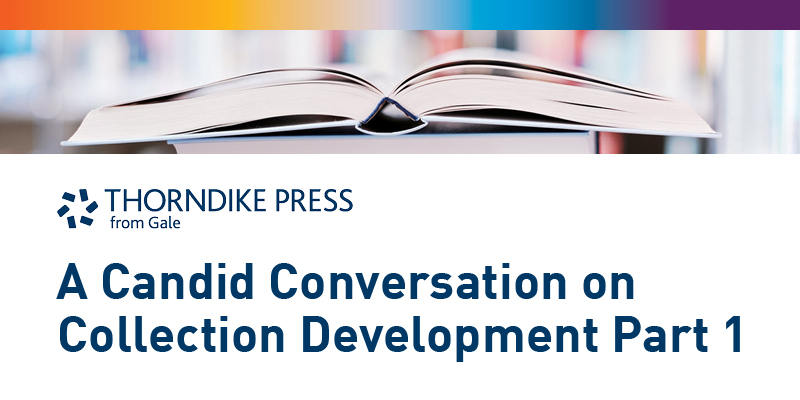| By Heather Booth, associate editor, Booklist |
What if the next big thing in inclusivity, access, equity, and serving more of our community members in a better way didn’t require new training, tech, or budget lines?
In a library climate in which we are often pushed toward expanding our collections with newer, tech-forward, innovative options, sometimes the best option is one we’ve always had—one that libraries have ample experience acquiring and housing, and one that our users across demographics can appreciate and enjoy. From format-agnostic millennials to screen-weary remote workers, large print books are finding younger, more-diverse audiences in libraries. As librarians reposition these collections, moving them out of their corners and into the spotlight, they’re displaying the new reality that large print collections are current, in high demand, and available for everyone.
While much conversation about equity in libraries today has its root in diversifying collection content, format is another element that needs to be balanced in order to meet the needs of our broad spectrum of patrons. When it stands next to traditional print, audio, or eBooks, the presence of a curated, thoughtfully diversified large print collection signals to patrons that we’re cognizant of their needs in both content and format.
At one of the country’s largest library systems in Jacksonville, Florida, Jill Haile, collection development manager, sees the benefits of focusing on large print. They are evident not only in her high circulation numbers but also in the spirit of equity and inclusion that underpins her 21-library system’s full collection. “You may not think it’s revolutionary, but we treat large print as another very important format for our customers.” Within their large print collection, all genre and interest categories, like romance, mystery, Black voices, or nonfiction, are considered at each location in a way that mirrors circulation patterns for those genres in other formats, from traditional print to digital media. “It’s about curating collections that cross formats. And large print is an important component of this strategy.” In their purchasing and cataloging, Jacksonville’s large print collection is considered with the same scrutiny and balance as traditional print. Crafting and maintaining a collection that is balanced in terms of genre, popularity, format, and age means a well-rounded selection that appeals broadly across a readership with a wide span of ages and interests.
Haile emphasizes that choice in format should be patron driven and is critical from a service standpoint.
Read more or watch these librarians share in an on-demand Booklist webcast here.
Explore Standing Order Plans >>
About the Author
Heather Booth is an associate editor at Booklist. Booth spent the first two decades of her career as a teen services librarian in public libraries.



